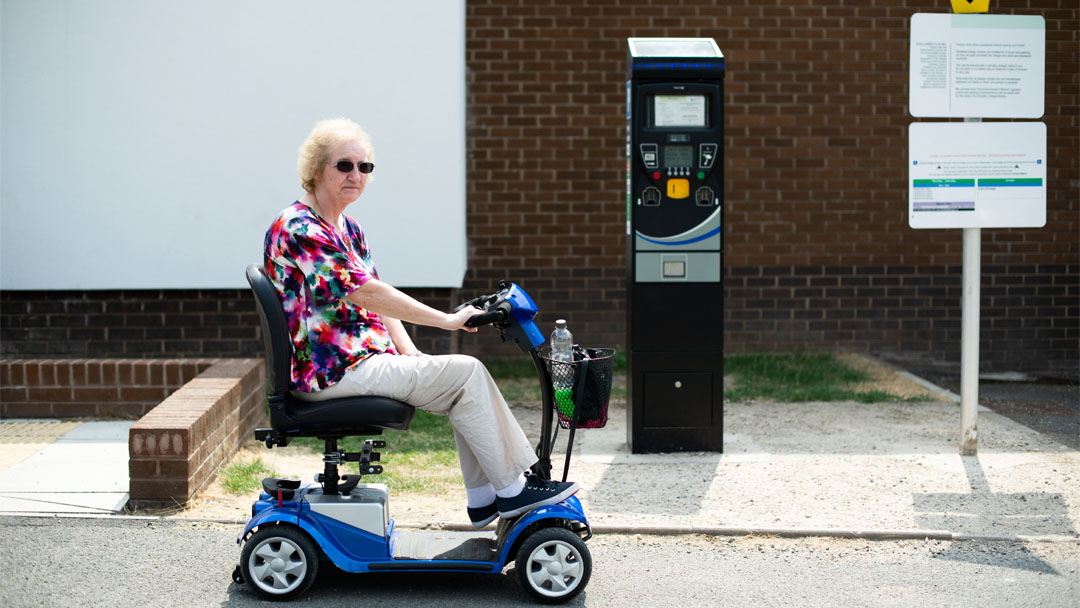How To Walk With A Cane After Hip Surgery

Hip surgery is a major medical procedure performed to ultimately improve your range of motion and alleviate chronic pain. Oftentimes, this surgery will result in a long recovery process, making the use of a cane essential. Use our guide below to choose the best cane and walk with the cane properly following surgery.
How To Choose The Right Cane
Once you have decided to use a cane, it’s crucial to understand how to use a walking aid to ensure your safety. You have to think critically about your weight and comfort requirements to best utilize your cane following hip surgery.
Weight
Matching the cane to your body type is important because the cane needs to be able to support your weight. Bigger individuals will, of course, require a larger, steadier cane. Do extensive research to determine which canes will be able to support your weight before settling on a specific type.
Height
Height is another consideration to take into account when looking for a cane. Your cane should be customized to your height so that you’ll never have to hunch over while walking. The cane grip should reach to your waist with your elbow bending slightly. Most providers will offer a cane sizing for individuals.
Style Of Handle
Always find a handle style that best suits your needs. If you are planning on using the cane for long periods of time, find a handle that fits within your hand comfortably. Following hip surgery, you may end up placing a lot of weight on the cane. For this reason, rubberized grips are best since they can prevent any slipping.
In Which Hand Should You Carry Your Cane?
It’s recommended to always place your cane in the hand opposite of the side of the hip you had surgery on. You’ll want your strong side to bear the most weight. Using the opposite hand with the cane will help you achieve better stability and overall balance.
In order to walk with the cane properly, place it beside you in your “strong side” hand. Take a step forward on your strong side, then move the cane forward as you begin moving your weak side leg. Always move your cane along with your weak side leg.
What Are The Best Canes to Use After Hip Surgery?
There are many types of walking canes available for various uses, read below and find out which walking cane is best for you or your loved one.
Single-Point Canes
These walking canes have a single point of contact to the ground and is usually one of the most widely used kind of walking cane. These types of canes are available in a variety of designs and styles.
Multiple-Point Canes
Multiple-point canes usually have 3 or 4 points of contact to the ground. Quad and tri-pod style canes are able to stand on their own to offer more stability for individuals requiring a little extra assistance with balance.
Hemi-Walker Canes
Such walking canes are different from quad canes because their base is a lot larger. Many individuals transferring from a walker to a cane because of paralysis, frailty, or limited functionality of an arm, leg, or both consider these canes to be the ideal choice.
Folding Canes
These types of canes break down to easily be stored away and make a perfect choice for individuals that don’t require use their cane all the time. Folding canes are usually made of very light-weight materials and come with a strap or satchel for easy transport.
Seat Canes
These canes un-fold to offer a convenient place to reset when the individual needs to take a small break. Seat canes are usually made of durable material and sometimes weigh a little more than conventional single-point canes.
What Attributes Should You Look For In Walking Canes?
As you start to explore what kind of walking cane is ideal for you or a loved one, think about the primary functionality and various cane attributes listed below to help you make a decision. The ideal kind of handle and grip is going to offer the strength, comfort, and mobility required to carry out activities of day to day living.
Walking Cane Handle Designs
- C-Cane
- Off-set Handle
- Function Grip
- Fritz Handle
Besides the design of these handles, you should also think about the different materials available when it comes to grips. Foam Grips, Jell-Grips, and Orthopedic Grips have been designed for comfort and to decrease joint pain and exhaustion and might be available for your style of preferred cane.
Walking Cane Body Design
The cane’s design is vital for comfort and well-being. The ergonomically designed wood and aluminum canes provide you with the ideal support possible. Additionally, think about what attributes come on it’s body (for instance, a LED Light)
Cane Tips
Finding a cane tip that is non-slip (such as rubber) is going to provide extra stability and aid in preventing falls. Cans tips can be purchased separately if they wear out.
Mobility Center In Mesa, Arizona
Mobility Center has been proudly serving the entire Phoenix, Arizona area since 1975 with the finest in mobility aids, scooters, wheel chairs, lifts and support equipment. Visit our convenient location to see the products and receive the individual attention that you deserve. Our service area includes Mesa, Apache Junction, Tempe, Chandler, Scottsdale, Phoenix, Glendale, Surprise, and Sun City.






